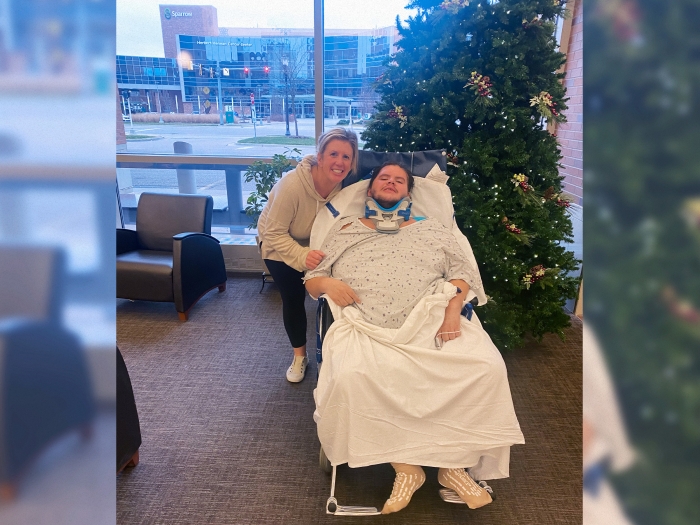Sharpest rise seen in patients harmed by mortar-launched shells, and in amputations.
2:51 PM
Author |

Ten years ago, Michigan's legislature loosened restrictions on fireworks in the state, allowing Michiganders to launch their own displays into the air legally.
But a new study shows that after the policy went into effect, the number of patients getting care for fireworks-related injuries at one of the state's largest trauma centers doubled.
Almost all of the increase came from a jump in injuries caused by large airborne fireworks launched from tubes called mortars. That's the same type that killed a professional hockey player who was visiting Michigan over the recent July 4 holiday weekend.
And while the study shows no significant changes in the age, gender, race or health care patterns of the fireworks-injured patients, it does show a significant increase in a specific type of injury called traumatic amputation, which could involve fingers, hands, or limbs.
The study was led by Melissa Shauver, M.P.H., when she was a research coordinator at the University of Michigan, and Kevin Chung, M.D., M.S., a U-M professor of plastic surgery and hand surgeon at Michigan Medicine, U-M's academic medical center.
MORE FROM MICHIGAN: Sign up for our weekly newsletter
Published ahead of print in the journal Academic Emergency Medicine, the study is the first to look at trends in fireworks-related injuries before and after Michigan's law change. It covers the years 2005 to 2018 and examines records from patients treated at Michigan Medicine for injuries related to non-professional fireworks use.
"Since the Michigan Firework Safety Act was first proposed it has been hotly contested. However, there was no evidence to provide context to this policy debate," said Shauver, who is now at the Feinberg School of Medicine at Northwestern University. "We knew that Michigan Medicine, as both an adult and pediatric level 1 trauma center and the home of a specialized ophthalmology emergency department, could provide this data and contribute to the assessment of this law."
Key findings
From January 2005 to December 2011, 81 patients came to U-M for fireworks-related emergency care, including 33 injured by airborne fireworks that were illegal for individuals to buy or use in the state at the time.
The 2011 law, which went into effect in January 2012, was intended to counter the unregulated use of airborne fireworks purchased in states where they were legal, and to avoid the resulting tax revenue loss to the state.
The personal, economic and society consequence of this preventable injury is immeasurable.Kevin Chung, M.D., M.S.
From January 2012 to December 2018, the number of patients treated at Michigan Medicine for fireworks injuries rose to 160. Nearly half – 74 patients – were injured by mortars, up from 20 in the years before the law changed.
SEE ALSO: Study: Double-Digit Rise in Head Injuries After Michigan Helmet Law Repeal
In both time periods, around 70% of the patients were transferred from other hospitals in Michigan, reflecting the seriousness of their injury. Patients injured by fireworks in other states and transferred to Michigan Medicine were not included because of variation in state fireworks laws.
Even after the researchers took into account the increase in all types of emergency care at Michigan Medicine during the study period, the jump in fireworks-related injuries still held.
More than 80% of the patients arrived at U-M in June or July, with 62% coming within the two weeks surrounding July 4. Forty percent were under age 18.
Long-term impacts
The researchers also traced the long-term impacts of the fireworks injuries on the patients who received follow-up care from Michigan Medicine. While 71% of patients didn't experience a long-term physical disability, six patients lost an eye, six others lost most of the sight in one or both eyes, six had fingers amputated and one had a traumatic brain injury.
Chung said the trend of lasting hand injuries has continued in 2021.
SEE ALSO: Epidemic of Firearm Injury Spurs New Wave of Research
"Firework injuries are common. This is a preventable injury that leads to long term consequences when the hand is blown up, which invariably ends with loss of fingers and sometimes the whole hand," he said. "During this year's July 4th holiday, I have had to care for patients whose lives are forever changed by firework injuries and who require a series of complex reconstruction just to preserve some semblance of hand function. The personal, economic and society consequence of this preventable injury is immeasurable."
Chung is a member of the U-M Institute for Healthcare Policy and Innovation.
More data on the impact of fireworks injuries and deaths nationwide was recently released in a report from the U.S. Consumer Product Safety Commission.
Paper cited: "Firework injuries before and after the Michigan Fireworks Safety Act," Acad Emerg Med. DOI: 10.1111/acem.1421

Explore a variety of healthcare news & stories by visiting the Health Lab home page for more articles.

Department of Communication at Michigan Medicine
Want top health & research news weekly? Sign up for Health Lab’s newsletters today!





